Nature's Guide to Biophilic Design in Healthcare
Biophilic design in healthcare improves patient healing and well-being. Let’s look at how it works with some of the best examples.

If I told you it was possible to enjoy your visit to the hospital or doctor, you might laugh. Who would really enjoy that experience?
The fluorescent lights, beeping equipment, stark walls, and nauseating smells are enough to make us on edge. As if a healthcare visit wasn’t stressful enough, now we also get overwhelmed by the environment itself.
But your practice’s interior design has the power to significantly improve a patient’s visit. There are ways you can use it to reduce stress and promote relaxation, even if it’s just changes to the decorations in your waiting room. The most trending way to do this is by introducing a biophilic design in healthcare.
This concept connects the industrial buildings with the natural environment. Biophilia refers to the hypothesis that humans have a tendency and desire to interact with and be in nature.
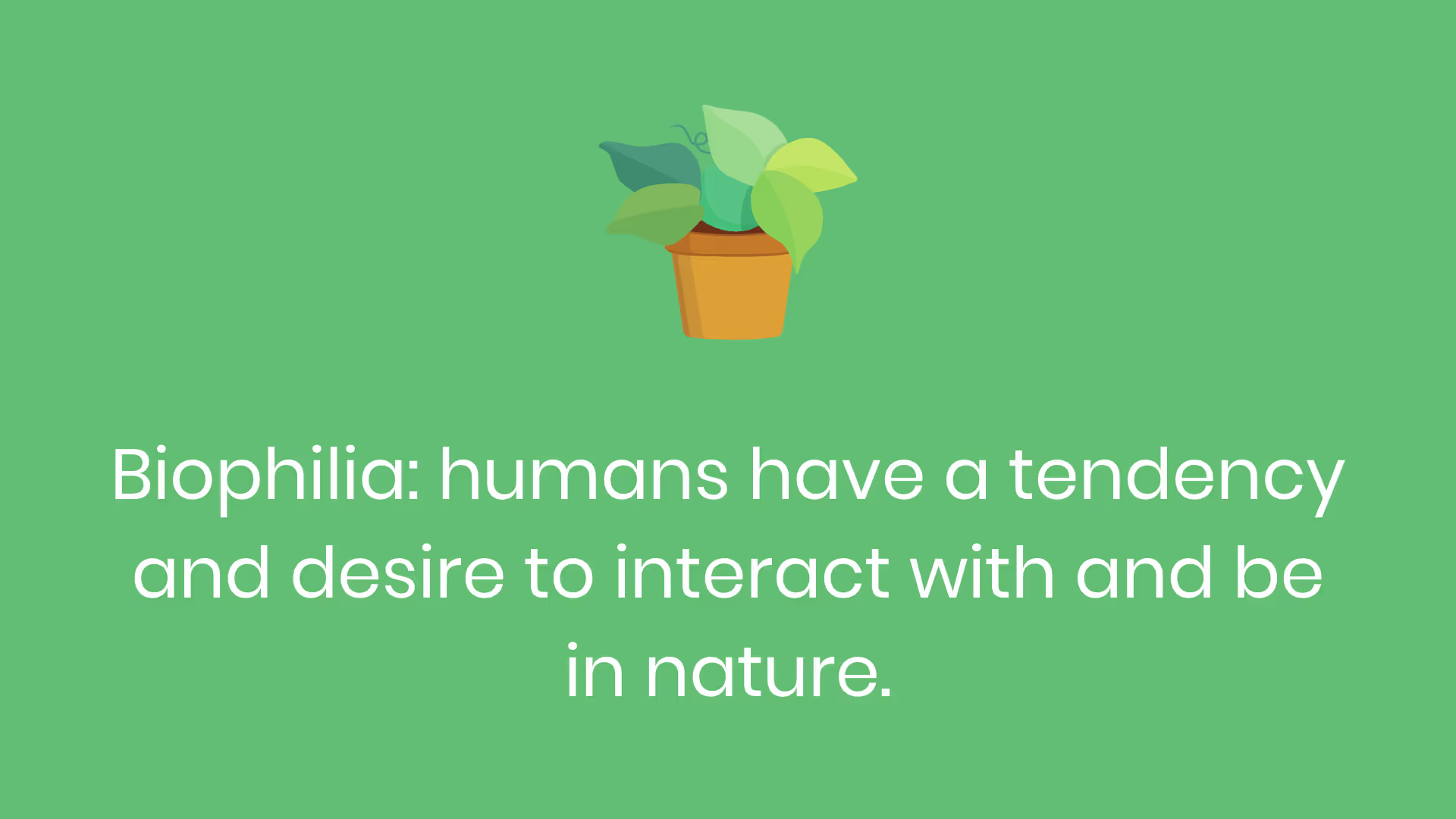
This might seem like a new idea, but it dates back to 1984. Edward O. Wilson first popularized biophilia as a human need for continuously connecting to the natural world.
Even though this idea is almost 40 years old, it’s becoming more popular. This is due to the world’s increase in urbanization as people experience a lack of nature in their everyday life. In the US alone, almost 83% of the population lives in urban areas. This rate continues to steadily increase.

This nature-centric building concept doesn’t just improve aesthetics, though. It also benefits our health.
One interview found that 95% of people experienced improved mood after spending time outside. They went from depressed and anxious to calm and balanced.
Interacting with nature is necessary for people’s physical and mental health, fitness, and wellbeing. Yet we spend 90% of our time indoors, and urbanization continues to disconnect us from the natural world.
Because of this, organizations try to incorporate elements that fulfill this need for nature. And more healthcare practices are starting to use it because of its benefits.
Biophilic design in healthcare improves patient healing and well-being. Let’s look at how it works with some of the best examples.
Our Connection to Nature
There are two ways we experience nature - directly and indirectly.
Direct refers to physical exposure to natural elements.
Indirect is exposure to only the likeness of nature, such as images or simulations of nature. These are more common than direct experiences since we spend the majority of our time indoors. Indirect is also more frequent in places where there is less of a natural environment, such as in urban areas.

As you might imagine, biophilic design in healthcare often relies on the indirect since patients are indoor. Even though it’s possible, it can be difficult to provide them with direct interaction.
Many facilities try to evoke the feeling of nature so patients still get the sense that they’re interacting with the natural world.
Proven Health Benefits
So biophilic design is becoming popular because of our subconscious desire to be in nature. But why do we have such an affinity with this environment? Well, part of it is because it improves our health.
Stress continues to be a problem as most Americans suffer from its moderate symptoms.
Around 44% report that their stress has increased in the last five years.

With less connection to nature and the increase in urbanization, we have less opportunity to reset our mental and physical energy.
Now, imagine being in a hospital or at a doctor’s office. These are areas of high stress for patients, their families, and employees. Especially for those who spend a lot of time here, it becomes an even greater challenge to a biophilia state. This is why you need to make the conscious effort to incorporate biophilic design in your healthcare practice.
Only 10 to 15 minutes with nature can improve health challenges.
It reduces…
- Blood pressure
- Heart rate
- Muscle tension
- The production of stress hormones
For example, colors like red and orange raise blood pressure by increasing pulse and heart rate. They also lead to irritability. But earthy colors such as blue and green invoke calm and serenity to help patients relax.
Stress has a major impact on the rate at which we heal. These problems that I mentioned aren’t conducive to patient healing and instead cause more complications. But in biophilic environments, post-operative recovery time decreased by 8.5% and pain medication decreased by 22%.

Exposure to nature also leads children to have fewer mental health problems as adults. A study from Aarhus University in Denmark studied the effects of children who grow up with greener surroundings. When exposed to high amounts of green space, children have up to 55% lower risk for developing mental disorders later in life
This was still prevalent after adjusting for other known risk factors such as socioeconomic status, urbanization, and family history of mental health.
This biophilic design in healthcare not only boosts our mental well-being, but certain elements will also improve the physical quality of a space.
Introducing plants in your medical facility can improve air quality. They absorb airborne pollutants and can remove harmful compounds in paint, carpets, and furniture. Plants also add water vapor back into the air which helps when the air is dry. This is necessary since dryness can cause respiratory irritation and illnesses.
Improved Workplace Environment
Patients aren’t the only ones that need an improved environment while at a healthcare facility. Employees also need to experience these benefits so that they can best take care of their clients.
Medical workers often have twelve-hour shifts, thus they spend the majority of their day inside. The long hours don’t leave much time to get outside before they go home to sleep or tend to household duties.
This is why biophilic design is also necessary for them; it improves productivity and mood in the workplace. Visible connections to nature increase the perception of well-being by 15%. And one study found that adding greenery to the workplace boosted productivity by 15% in just three months.

But 58% of workers say their office has no greenery, and another shocking 47% have no natural lighting. Although, 67% of workers are happy when they walk into bright office environments with green, yellow, and blue colors.
Employees are mindful of their work environment appearance, and they will avoid working for a company because of it. Around 33% of people said that office design affects their decision whether to work for a company.
Improving your practice’s biophilic design attracts employees who are willing to stay long-term. If your workplace design reduces stress, they’ll be less likely to face burnout and will have higher well-being.
Facilities That Already Use Biophilic Design
Providence St. Joseph Care Center (Spokane, WA)
Providence St. Joseph Care Center located in Spokane, WA has a garden to provide a healing environment for residents and their families. It has a large basalt rock water feature that creates soothing sounds to instill tranquility into their visitors. The facility also installed walking paths and benches for patients to use during therapy.
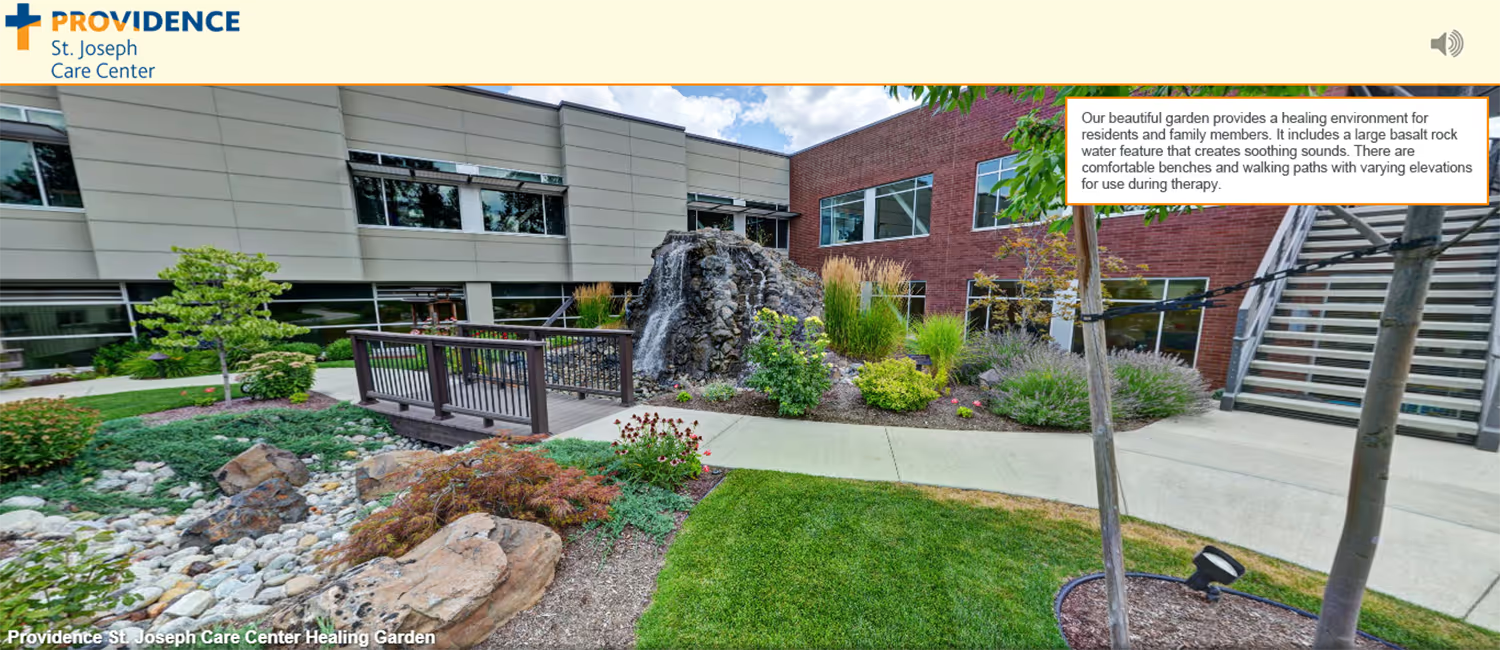
The Christ Hospital Joint & Spine Center (Cincinnati, OH)
The Christ Hospital Joint & Spine Center is unique for many reasons since it’s the first and only center of its kind in the region. But it also stands out because of its two rooftop gardens with views of the Cincinnati skyline.
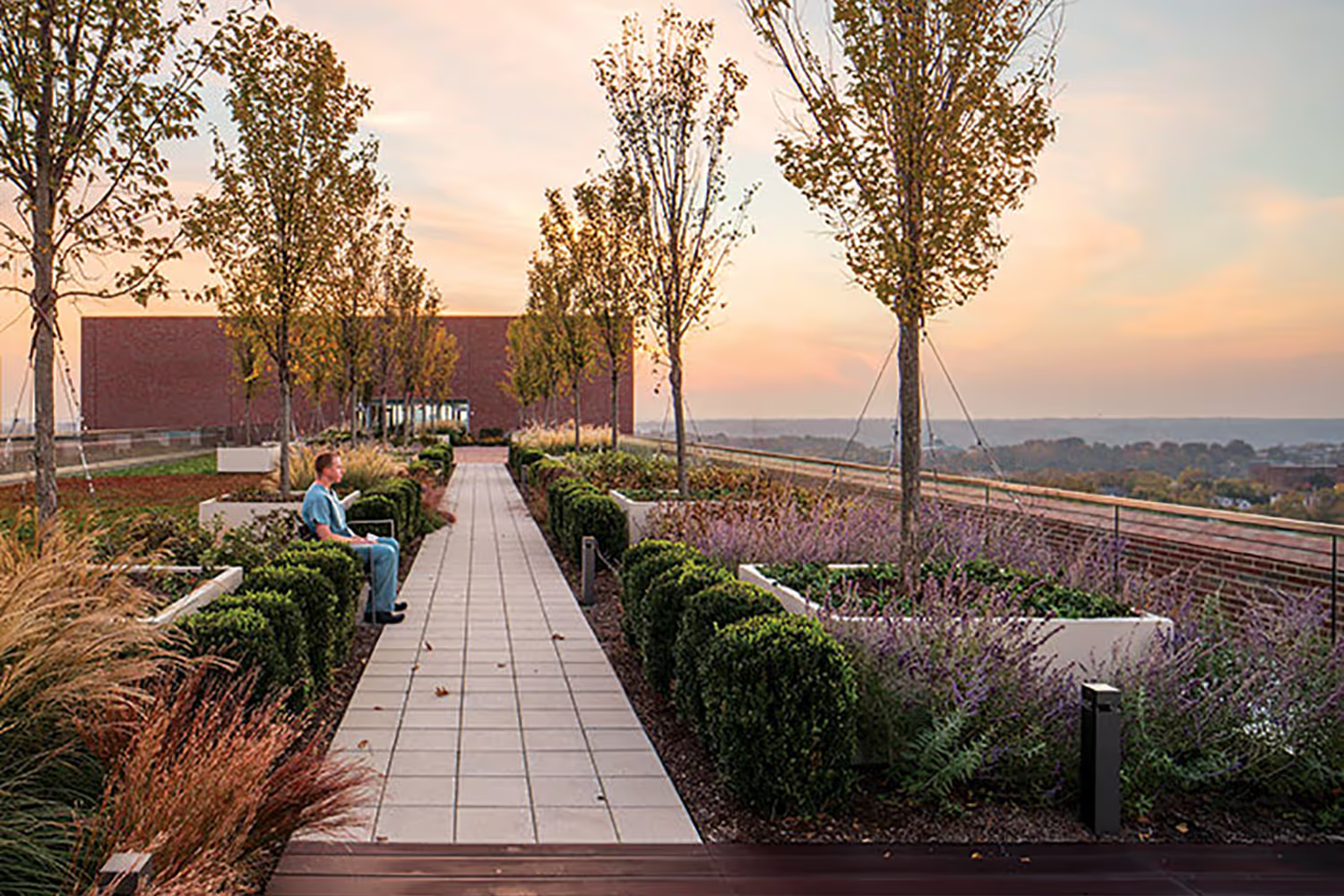
Its outdoor landscape includes plants, pergolas, benches, and infinity fountains. Each of these spaces provides respite and rehabilitation for patients. It even uses biophilic design indoors with its abundant natural light to promote healing.
Kaiser Permanente Radiation Oncology Center (Anaheim, CA)
To reduce the stress and discomfort of cancer treatment, Kaiser Permanente’s Radiation Oncology Center introduced biophilic design aspects. Natural light, views, and colors create a calming experience resembling a spa instead of a healthcare facility.
Each room faces the centerpiece of the facility, its Zen and vertical gardens, with a long glass wall. The exterior glass has a glazing pattern to mirror the surrounding landscape. It provides transparency where desired and privacy where needed. At night, the building produces a warm glow to boost hope for patients.
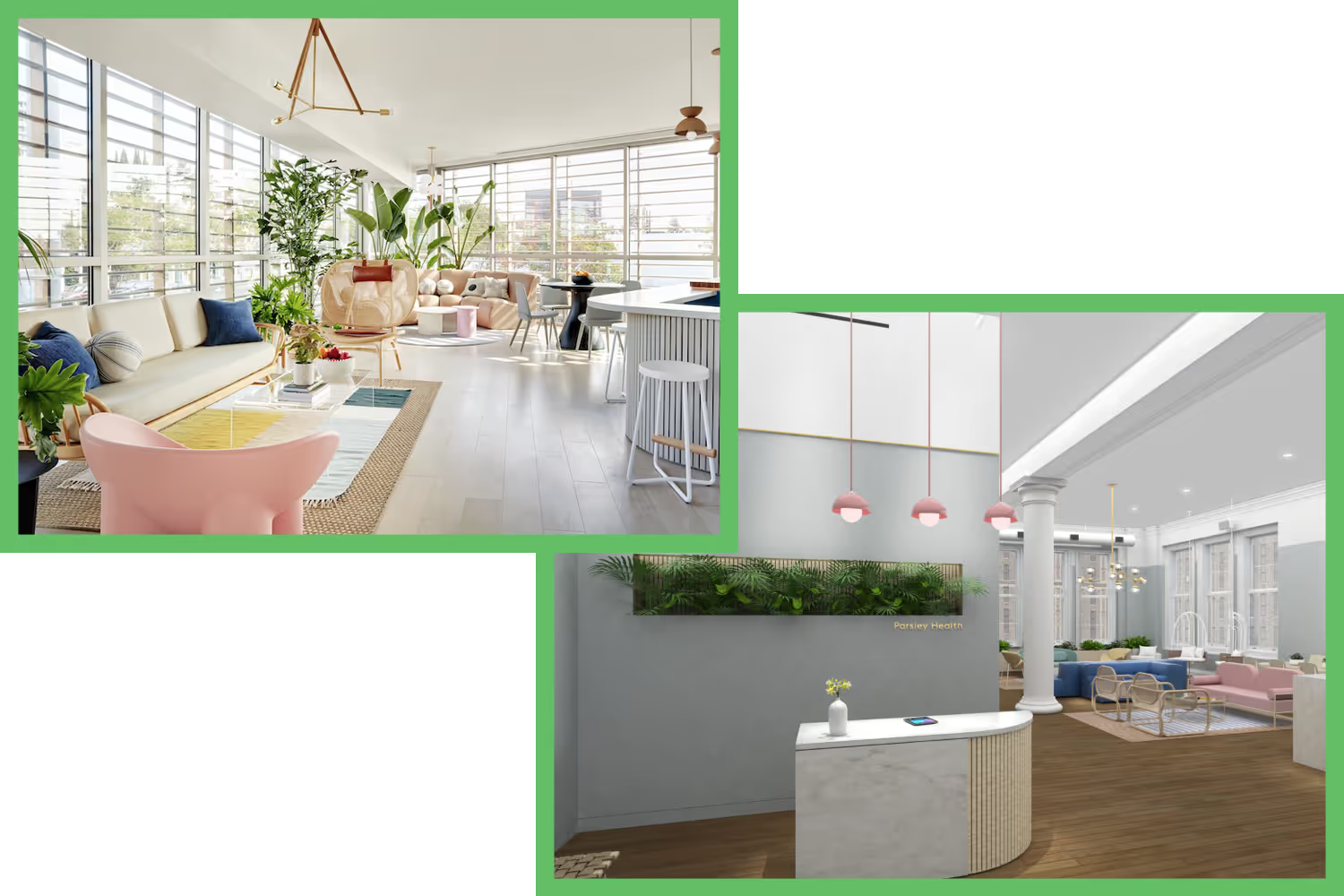
Maggie’s Oxford Centre (Oxford, England)
Maggie’s Centres are cancer caring centers designed as a welcoming place for patients and families. The facility itself is on the grounds of the Churchill Hospital.
These centers offer a variety of support benefits to people dealing with cancer...
- Treatment information
- Support groups
- Information for claiming benefits
- Exercise and nutrition groups
- Friends and family support
- Grief support
- Relaxation and stress management
To boost its calming environment, Maggie’s Oxford is set in a structure that feels like a treehouse. With its large windows surrounded by trees, the meeting place allows ample lighting and views of the outdoors. It feels like an escape so visitors can relax from the stressors of a cancer diagnosis.
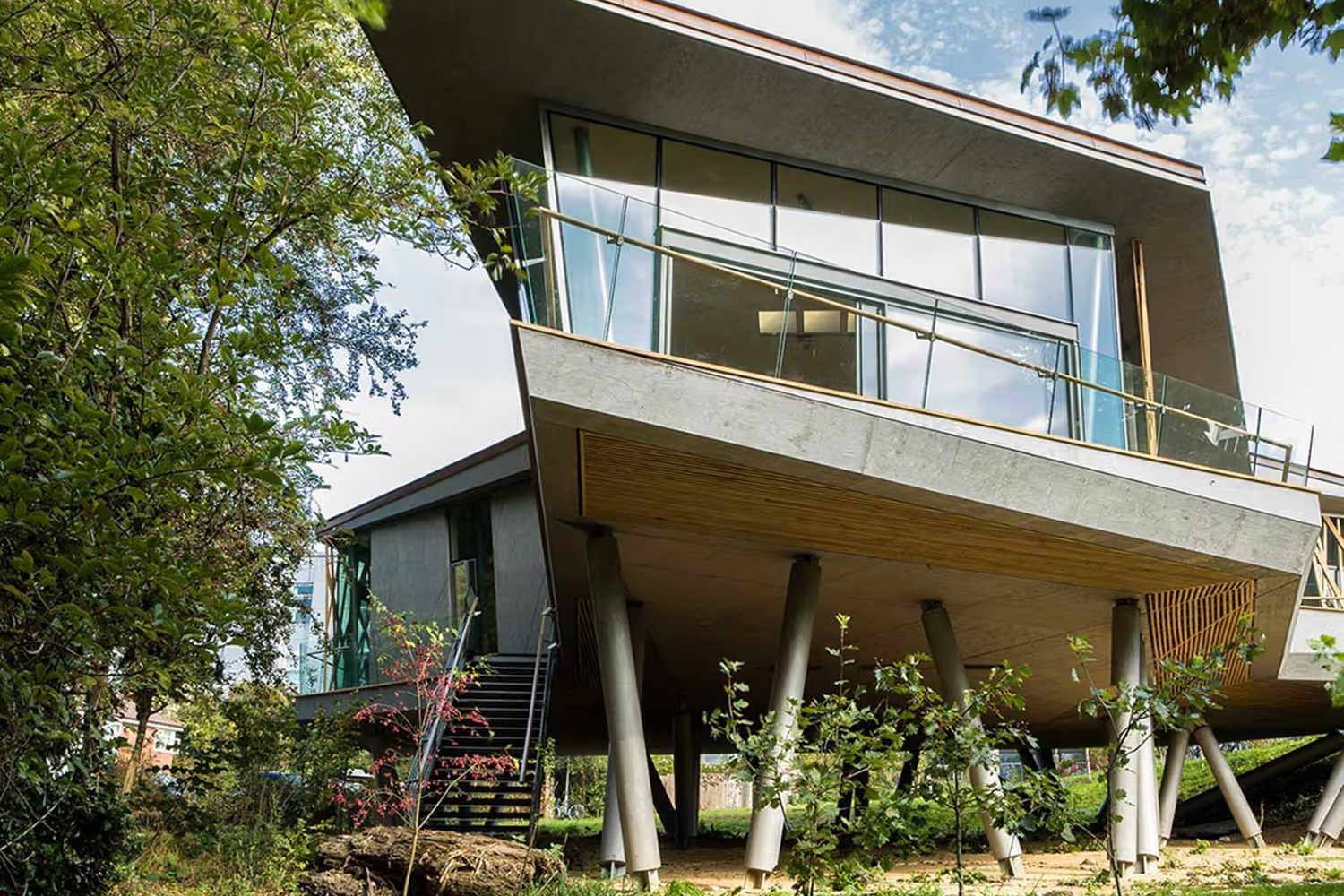
Oslo University Hospital (Oslo, Norway)
The Outdoor Care Retreats are a short walking distance from Norway’s largest hospital, Oslo University Hospital. These cabins offer patients and their families respite from treatment and long-term hospitalizations. Even though they’re part of the hospital’s campus, the secluded wooden shelters feel like a place of their own.
Surrounded by the lush forest, the cabins are a peaceful escape where visitors can enjoy the therapeutic nature. The Outdoor Care Retreats fit the needs of all patients. They’re wheelchair accessible, and the entrance is even large enough to make room for hospital beds.
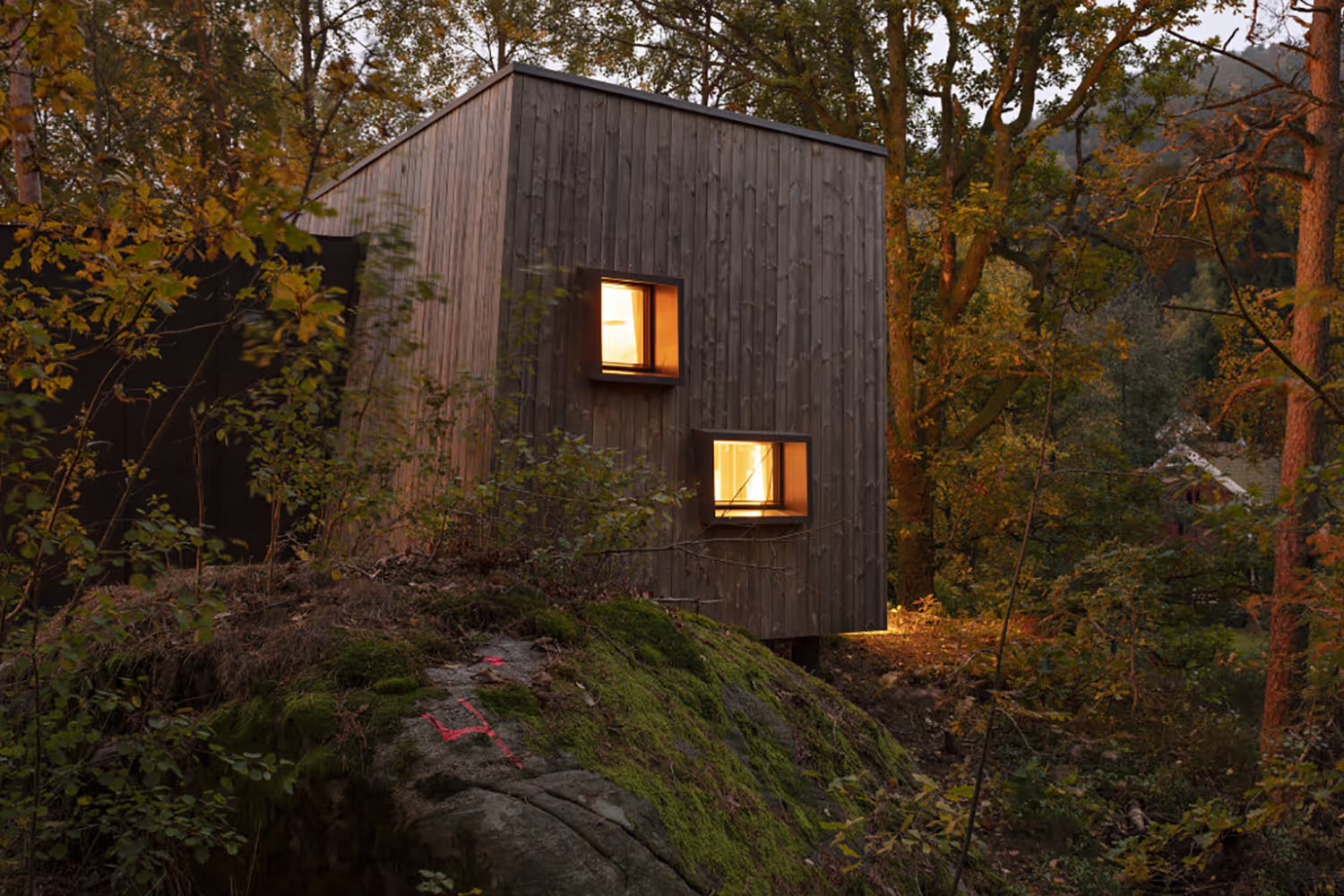
The renewed calm that the cabins provide helps improve disease management. The Friluftssykehuset Foundation donated these cabins to help motivate patients through treatment. They can even use the space for treatment. Or they can just escape here for relaxation or spending time with friends and family away from the hospital.
Parsley Health
Parsley Health is a holistic medicine practice with locations in New York City, Los Angeles, and San Francisco. Since its focus is on functional medicine, the practice approaches health from a lifestyle perspective. This is evident just by looking at the facilities’ design.
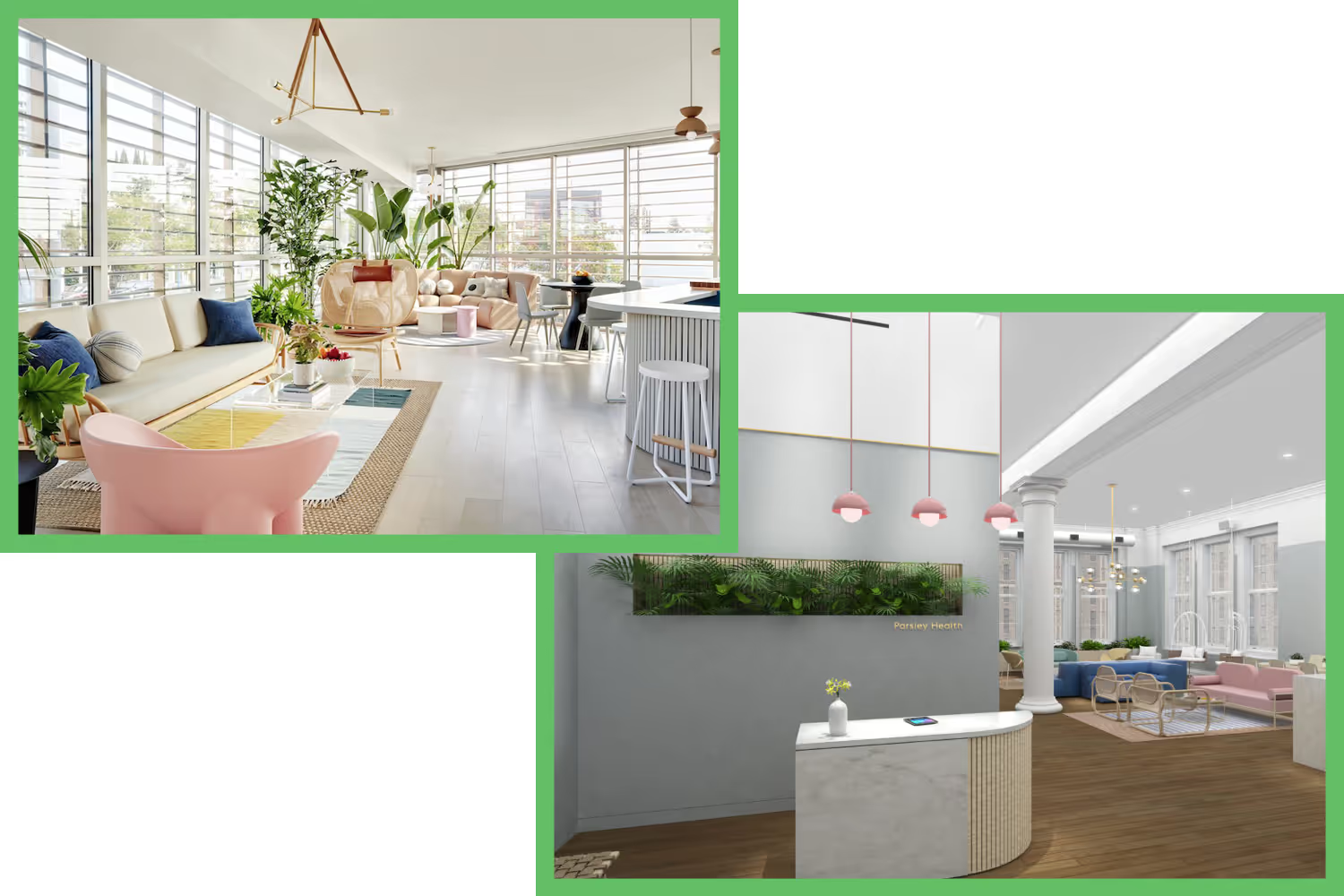
They use biophilic elements to promote wellness and health for patients. You wouldn’t feel like you’re at a doctor’s office at all when you walk in. Each location is full of natural light, plenty of plants, and decor that uses a lot of wood and natural colors. Even though the facilities are in big bustling cities, their offices have a calming, quiet atmosphere.
Conclusion
Society continues to have less connection with the natural environment.
Most of the global population lives in urban areas, and our busy work schedules prevent us from getting outside more often. Healthcare workers especially face this with their long work hours.
It already doesn’t help our health that we don’t experience this connection, but it’s even worse if we’re sick. Feeling stressed isn’t conducive to healing and can cause more health complications. But being in the presence of nature boosts our mood, overall well-being, and the physical quality of an environment.
Emphasize your product's unique features or benefits to differentiate it from competitors
In nec dictum adipiscing pharetra enim etiam scelerisque dolor purus ipsum egestas cursus vulputate arcu egestas ut eu sed mollis consectetur mattis pharetra curabitur et maecenas in mattis fames consectetur ipsum quis risus mauris aliquam ornare nisl purus at ipsum nulla accumsan consectetur vestibulum suspendisse aliquam condimentum scelerisque lacinia pellentesque vestibulum condimentum turpis ligula pharetra dictum sapien facilisis sapien at sagittis et cursus congue.
- Pharetra curabitur et maecenas in mattis fames consectetur ipsum quis risus.
- Justo urna nisi auctor consequat consectetur dolor lectus blandit.
- Eget egestas volutpat lacinia vestibulum vitae mattis hendrerit.
- Ornare elit odio tellus orci bibendum dictum id sem congue enim amet diam.
Incorporate statistics or specific numbers to highlight the effectiveness or popularity of your offering
Convallis pellentesque ullamcorper sapien sed tristique fermentum proin amet quam tincidunt feugiat vitae neque quisque odio ut pellentesque ac mauris eget lectus. Pretium arcu turpis lacus sapien sit at eu sapien duis magna nunc nibh nam non ut nibh ultrices ultrices elementum egestas enim nisl sed cursus pellentesque sit dignissim enim euismod sit et convallis sed pelis viverra quam at nisl sit pharetra enim nisl nec vestibulum posuere in volutpat sed blandit neque risus.

Use time-sensitive language to encourage immediate action, such as "Limited Time Offer
Feugiat vitae neque quisque odio ut pellentesque ac mauris eget lectus. Pretium arcu turpis lacus sapien sit at eu sapien duis magna nunc nibh nam non ut nibh ultrices ultrices elementum egestas enim nisl sed cursus pellentesque sit dignissim enim euismod sit et convallis sed pelis viverra quam at nisl sit pharetra enim nisl nec vestibulum posuere in volutpat sed blandit neque risus.
- Pharetra curabitur et maecenas in mattis fames consectetur ipsum quis risus.
- Justo urna nisi auctor consequat consectetur dolor lectus blandit.
- Eget egestas volutpat lacinia vestibulum vitae mattis hendrerit.
- Ornare elit odio tellus orci bibendum dictum id sem congue enim amet diam.
Address customer pain points directly by showing how your product solves their problems
Feugiat vitae neque quisque odio ut pellentesque ac mauris eget lectus. Pretium arcu turpis lacus sapien sit at eu sapien duis magna nunc nibh nam non ut nibh ultrices ultrices elementum egestas enim nisl sed cursus pellentesque sit dignissim enim euismod sit et convallis sed pelis viverra quam at nisl sit pharetra enim nisl nec vestibulum posuere in volutpat sed blandit neque risus.
Vel etiam vel amet aenean eget in habitasse nunc duis tellus sem turpis risus aliquam ac volutpat tellus eu faucibus ullamcorper.
Tailor titles to your ideal customer segment using phrases like "Designed for Busy Professionals
Sed pretium id nibh id sit felis vitae volutpat volutpat adipiscing at sodales neque lectus mi phasellus commodo at elit suspendisse ornare faucibus lectus purus viverra in nec aliquet commodo et sed sed nisi tempor mi pellentesque arcu viverra pretium duis enim vulputate dignissim etiam ultrices vitae neque urna proin nibh diam turpis augue lacus.


.avif)

